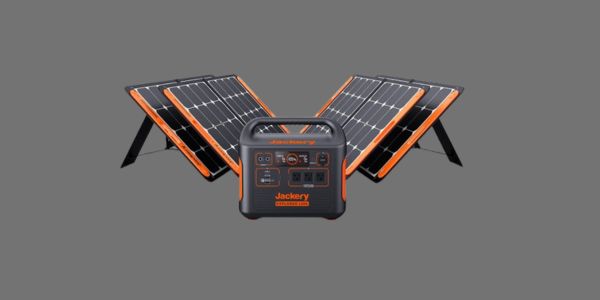Hiking is an excellent way to reconnect with nature, relax, and experience the great outdoors. It’s a chance to get away from the rush and bustle of everyday life and immerse yourself in the serenity of natural surroundings. However, electronics charged while hiking in this increasingly digital age, many hikers rely on technological gadgets for navigation, communication, and safety. Whether you’re using a GPS gadget to map your trip, photographing the beauty of the outdoors with your smartphone, or making an emergency call, keeping your equipment charged is critical.
Going on a hiking trip can be an amazing experience. Where you will get dazzling views and a chance to connect with nature. Make Sure if You Are a Beginner hiker or a professional hiker first thing is to know your hiking route and the second one is to get your electronics charged. However, it also means being away from modern amenities such as electrical outlets, which can be a problem if you have electronic devices that need to be charged.
There are several options available for the electronics charged while hiking trip. From portable solar panels to power banks, these solutions can help you stay connected to the outside world without sacrificing the serenity of the great outdoors. In this conversation, we will explore different ways to charge electronics when hiking, taking into consideration factors such as weight, cost, and efficiency.
Choose the Right Electronics
Before delving into the realm of charging alternatives, evaluate the electrical gadgets you’ll be carrying on your hiking trip. Here is a list of common electrical gadgets used when hiking:
- GPS Devices: They give precise position information and are essential for navigation. They are available in a variety of formats, ranging from dedicated GPS devices to GPS-enabled smartwatches and smartphones.
- Cellphones: With GPS and a variety of apps, cellphones are handy hiking equipment. They may be used as maps, cameras, communication devices, and other things.
- Portable Chargers: These handy gadgets are your lifeline when it comes to charging your electronics on the fly. They are available in a variety of capacities and sizes to meet your requirements.
Make sure the gadgets you purchase are lightweight and long-lasting. To resist the rigors of the path, many hikers choose sturdy, waterproof, and shockproof choices. Take into account battery life and power efficiency as well. Devices with longer battery life and energy-saving features will go between charges for longer.
Power Management
The skill of making your gadgets work more effectively in order to improve their battery life is known as power management. Here are some pointers to help you successfully control the power of your device:
Check your device’s settings to verify they’re optimal for battery conservation. Reduce screen brightness, change screen timeout settings, and turn off capabilities like Bluetooth and Wi-Fi while not in use.
Keep an eye on programs that are operating in the background. Even when you’re not actively using them, some apps may consume your device’s resources and deplete the battery.
Consider switching your smartphone to airplane mode when you’re not using it for calls or data. This disables the device’s WiFi functionality, which saves a large amount of battery.
Charging Solutions for Hiking
| Device Type | Pros | Cons |
|---|---|---|
| Solar Chargers | Environmentally friendly | Slower charging times |
| Rechargeable under sunlight | Ineffective on cloudy days | |
| Ideal for extended trips | Limited use at night |
| Compact and portable | Initial cost and weight | |
|---|---|---|
| Portable Power Banks | Versatile and reliable | Adds weight to your gear |
| Multiple capacity options | Charging time varies | |
| Fast-charging capabilities | Cost varies with capacity |
| Lightweight and portable | ||
|---|---|---|
| Battery Packs and | Crucial for backup power | Compatibility with devices |
| Backup Batteries | Compact and easy to carry | |
| Useful for remote areas | Proper storage and handling |
| Varying battery types | ||
|---|---|---|
| Wind-Up Chargers | Reliable in emergency | Manual effort required |
| Hand-cranked power generation | Slow charging times | |
| Compact and lightweight | Limited capacity | |
| Suitable as a backup |
How to Charge Electronics when Hiking
Several options are available for Electronics Charged While Hiking, depending on your needs and preferences. Here are some of the most common methods:
1. Portable Solar Panels

Portable solar panels are a great option for hikers who want to charge their electronic devices while on the go. These panels use solar energy to generate electricity, which can then be used to charge your devices. They are lightweight, compact, and easy to carry in your backpack, making them a convenient and eco-friendly solution for hikers who are on the move.
Solar chargers are an environmentally beneficial and sustainable solution to keep your gadgets charged while trekking. They generate power by converting sunlight. Here are the benefits and drawbacks of utilizing solar chargers:
Pros
- Environmentally friendly
- Rechargeable under direct sunlight
- Ideal for long hiking trips
- Compact and portable
Cons
- Slower charging times
- Ineffective on cloudy days
- Limited use at night
- Initial cost and weight
Follow these guidelines to get the most out of your solar charger:
- Use Direct Sunshine: To maximize charging speed, place your solar charger in direct sunshine.
- Keep It Clear: To optimize performance, keep the solar panels clear of dirt and debris.
- Charge as Hiking: Clip the solar charger to your backpack and allow it to charge your power bank as you trek.
2. Portable Power Banks

Portable power banks are multifunctional and can save your life when you need to charge your electronics while hiking. There are many different varieties to select from, including compact pocket-sized chargers and bigger, high-capacity power banks. Here are some things to think about and pointers:
Capacity: Select a power bank with a capacity that meets your trekking requirements. A larger capacity implies more charges but also greater weight. Find a happy medium between capacity and portability.
Charging Speed: Some power banks allow fast charging, which is an important feature to look for if you want a quick power boost.
Quality and Dependability: To minimize probable faults during your hiking journey, invest in a dependable and long-lasting power bank.
3. Hand-Crank Chargers

Hand-crank chargers are a unique option for hikers who are looking for a low-cost and reliable solution to charging their electronic devices. These chargers are powered by a hand-crank mechanism, which generates electricity that can be used to charge electronic devices such as smartphones and GPS units.
Hand-crank chargers are lightweight and compact, making them easy to carry in your backpack. They are also environmentally friendly, as they don’t require batteries or electricity to operate.
To use a hand-crank charger, simply plug your electronic device into the charger and start turning the hand-crank. The mechanism generates electricity, which is then used to charge your device. The charging time will depend on how much you crank the handle, but in general, it can take anywhere from 10-30 minutes of cranking to get a full charge on a smartphone.
One thing to keep in mind is that hand-crank chargers require physical effort to operate. This means that they may not be suitable for hikers who have limited mobility or hand strength. However, for those who can use them, hand-crank chargers are a great option for emergencies when other charging options may not be available.
Overall, hand-crank chargers are a reliable and cost-effective option for hikers who want to charge their electronic devices while on the go. They are easy to use, environmentally friendly, and provide a source of electricity that is always available. As long as you have the energy to crank the handle.
4. Portable Generators

Portable generators are a more powerful option for hikers who need to charge multiple electronic devices or run larger appliances while on the go. These generators use fuel such as gasoline or propane to generate electricity, which can then be used to power electronic devices, lights, and other appliances.
Portable generators come in different sizes and capacities, and they can provide anywhere from 1,000 to 10,000 watts of power. They are typically larger and heavier than other charging options, but they provide a reliable source of electricity for extended periods of time.
When choosing a portable generator, it’s important to consider factors such as size, weight, fuel type, and capacity. Look for a generator that is easy to carry in your vehicle or on your backpack if possible, and make sure that it has a high capacity rating, so it can handle the devices you need to charge.
It’s also important to consider the fuel type, as this will affect the generator’s performance and the cost of operation. Gasoline generators are a popular option because gasoline is widely available, but they can be noisy and produce emissions. Propane generators are a cleaner and quieter option, but they may require additional equipment such as a propane tank.
Portable generators are a great option for hikers who need to charge multiple devices or run larger appliances such as refrigerators or stoves. However, they can be expensive and require regular maintenance to ensure optimal performance.
Overall, portable generators are a reliable and powerful option for hikers who need to power multiple devices or appliances while on the go. They are a great backup option for emergencies. They provide a source of electricity that can last for extended periods of time.
Tips and tricks for Electronics Charged While Hiking
Here are some additional tips and tricks for charging electronics while hiking:
- Use airplane mode: When you’re hiking in a remote area, your smartphone may constantly search for a signal, which drains the battery quickly. By turning on airplane mode, you can conserve battery life and make your device last longer between charges.
- Carry spare batteries: If you have a camera or other device that uses removable batteries, bring extras with you. This way, you can swap out the batteries as needed and keep your device running without having to wait for it to charge.
- Prioritize your charging needs: If you’re only able to charge one device at a time, prioritize the device that you need the most. For example, if you’re using your phone as a GPS and for emergency communication. Make sure to keep it charged up and ready to go.
- Invest in a multi-port charger: If you have multiple devices that need to be charged. Consider investing in a multi-port charger. This way, you can charge multiple devices at once and save time.
- Take advantage of charging opportunities: If you’re hiking near a town or campground, take advantage of charging opportunities such as electrical outlets or charging stations. This way, you can fully charge your devices and be prepared for your next hike.
- Use solar-powered lights: If you need a light source while hiking, consider using solar-powered lights. These can be charged during the day and provide light at night without draining your battery-powered devices.
- Pack a portable battery-powered fan: If you’re hiking in hot weather, a portable battery-powered fan can be a lifesaver. It will help you stay cool and comfortable without draining your device’s battery.
FAQs for Electronics Charged While Hiking
Here are some FAQs about charging electronics while hiking:
Can I Charge My Electronics With a Power Bank While hiking?
Yes, power banks are a great option for charging electronics while hiking. They are lightweight, portable, and can charge multiple devices. Just make sure to bring a fully charged power bank with you. Consider purchasing a solar-powered power bank for extended hikes.
Can I Use a Hand-Crank Charger to Charge My Laptop?
Hand-crank chargers are typically not powerful enough to charge a laptop. Laptops require more energy than smartphones or GPS devices. However, some hand-crank chargers may come with a larger capacity battery that can be used to charge laptops or other larger devices.
Can I Bring a Portable Generator on a Hiking Trip?
Portable generators can be a great option for powering larger appliances or multiple devices while camping or on an extended hiking trip. However, they are typically larger and heavier than other charging options. And they require fuel such as gasoline or propane to operate. Make sure to research the regulations and restrictions for using generators in the area where you plan to hike.
How Long Does it Take to Charge a Device With a Solar Panel?
The charging time for a device using a solar panel will depend on the capacity of the panel and the amount of sunlight available. In general. It can take anywhere from a few hours to a full day to charge a device using a solar panel. Make sure to position the solar panel in direct sunlight for optimal charging.
Can I Charge Multiple Devices With a Single Solar Panel?
Yes, many solar panels come with multiple USB ports or charging cables, allowing you to charge multiple devices at once. However, charging multiple devices may slow down the charging time. The solar panel will have to split the energy between each device.
Conclusion
There are several options available for Electronics Charged While Hiking. These include portable solar panels, power banks, hand-crank chargers, and portable generators. Each option has its own advantages and limitations. It’s important to choose the option that best fits your needs and the requirements of your hiking trip. By being prepared and bringing the right charging equipment. You can ensure that your electronics stay powered up and Electronics Charged While Hiking which will help you use them while exploring the great outdoors.
You May Also Like-

